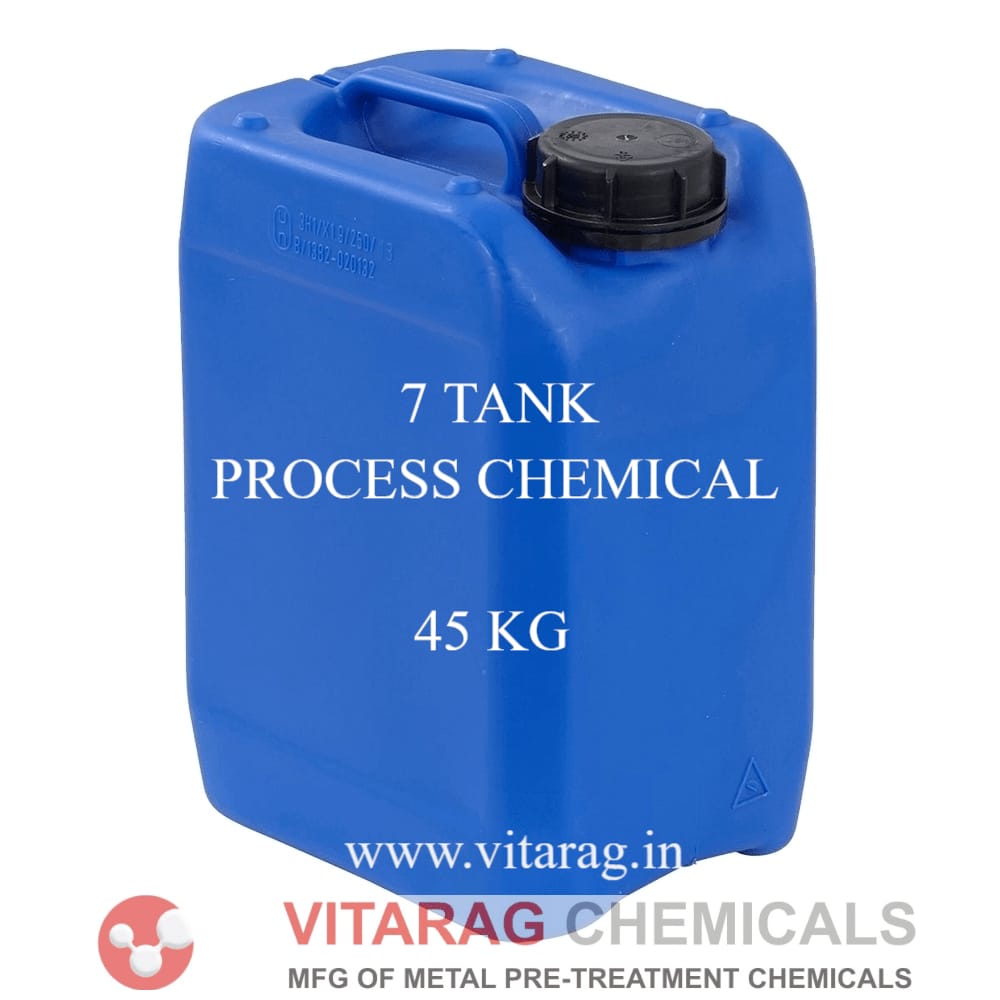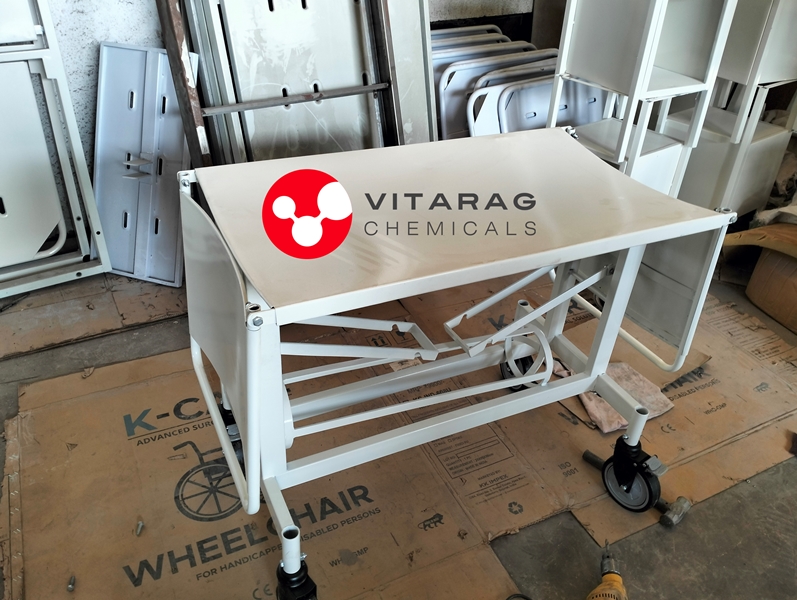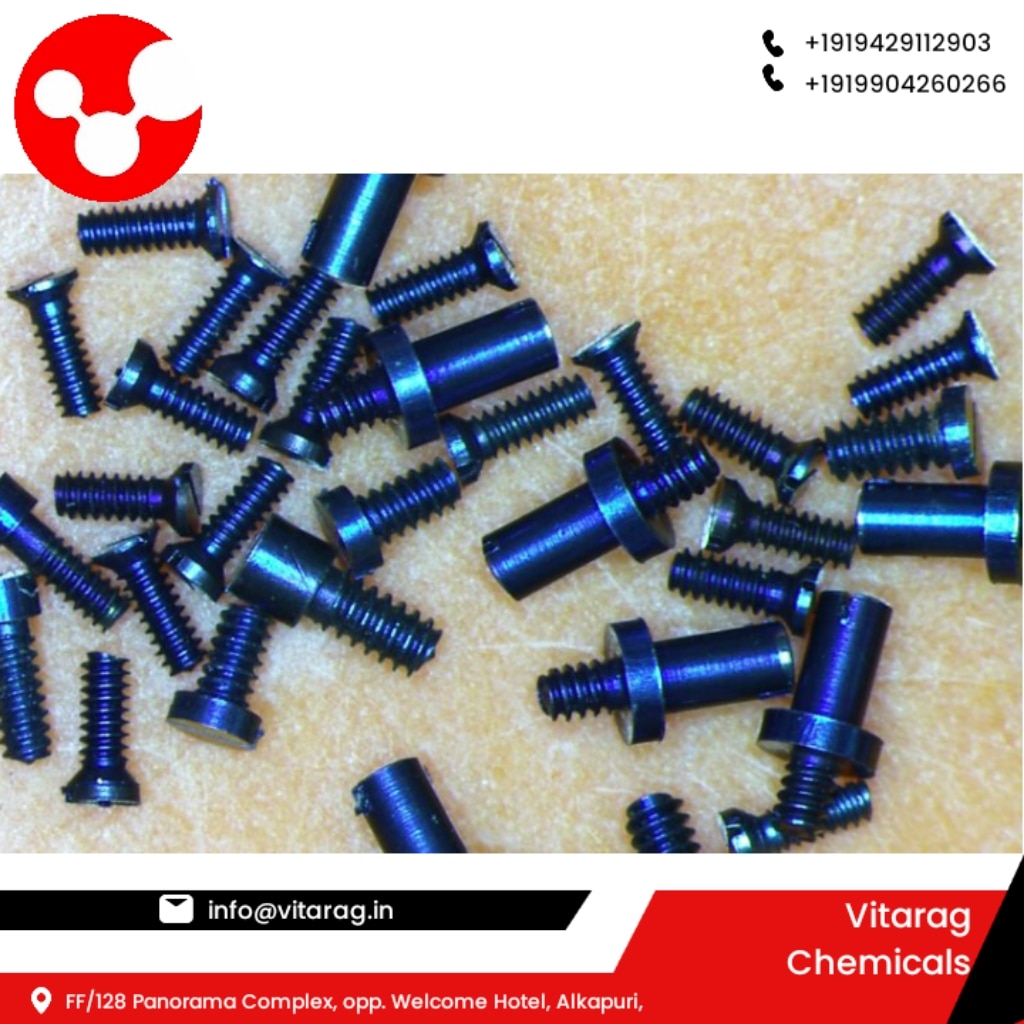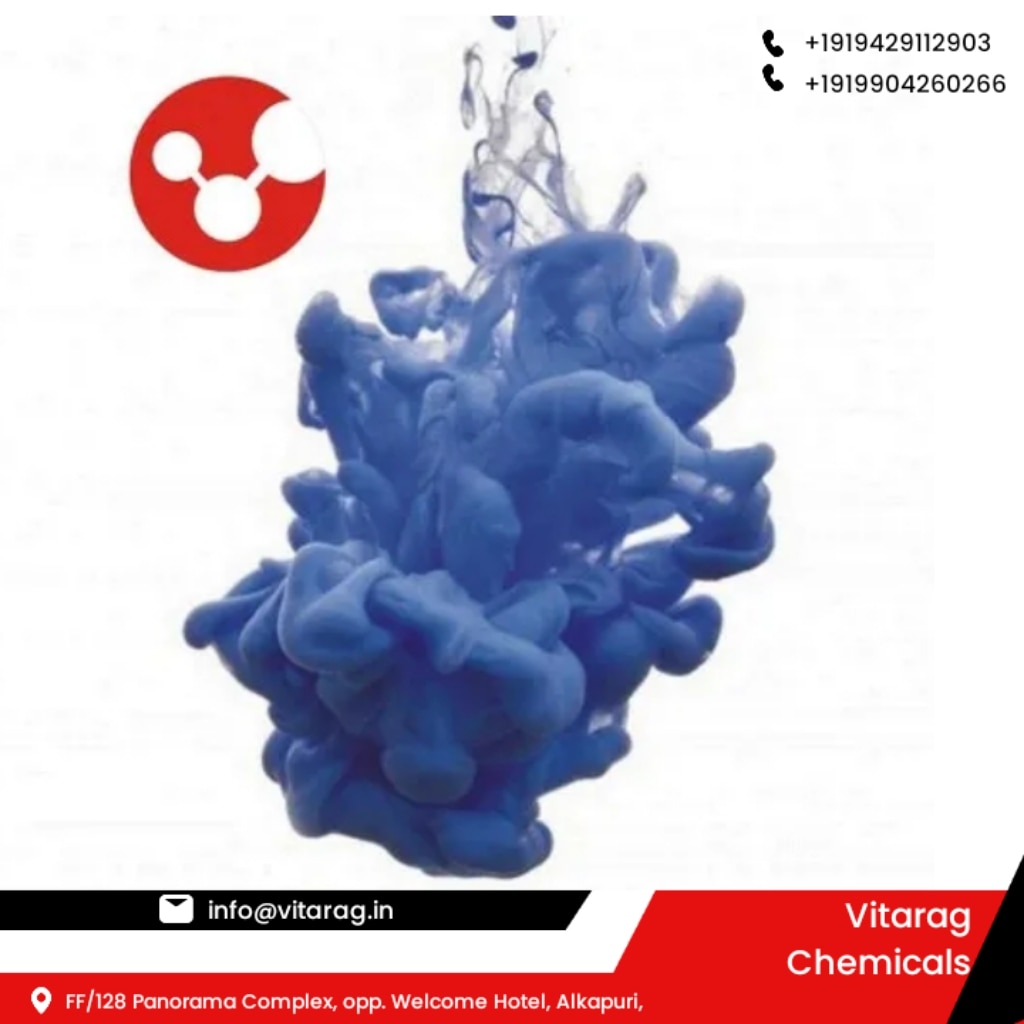Vitarag Chemicals is a leading Manufacturer of 7 tank process chemicals. we have been supplying chemicals in India. · 7 TANK PROCESS : · This invention relates to a process of pretreating and painting the surface of zinc-based metals. Importance of Understanding the Chemicals Used in the 7 Tank Process for Powder Coating Before we delve into the types of chemicals utilized in the 7-tank process, let\\'s first explore the significance of understanding them. Knowledge about these chemicals empowers engineers, technicians, and industry professionals to make informed decisions at each stage of the process. Understanding the characteristics, applications, and potential risks associated with different chemicals is crucial. Conversion Coating Chemicals in 7-Tank Process Chemicals Conversion coating chemicals play a crucial role in the highly effective 7-tank process, providing an essential step in the surface preparation of various metals. Their significance lies in their ability to enhance the durability and corrosion resistance of the materials they are applied to. conversion coating chemicals are an indispensable part of any metal finishing process. The types of conversion coating chemicals used are diverse, including phosphate-based, chromate-based, and zirconium-based coatings. Each type offers unique qualities and benefits, ensuring excellent adhesion and surface protection. These chemicals form a thin, uniform layer on the metal surface, which not only acte as a barrier against corrosion but also facilitat adhesion of subsequent coatings, such as Privacy Terms powder coating. · By zinc-based metals we mean zinc itself and alloys of zinc with minor proportions of other alloying materials, together with those impurities known to the art to occur therein. For example the metal may be zinc sheet, formed zinc strip or zinc-based die-casting alloys, typically containing 90 percent or more by weight of zinc. Alternatively the metal surface to be treated may be a zinc coating applied to an iron or steel substrated, for example by hot dipping or electrodeposition and usually referred to as galvanized iron or steel. The zinc surface may also be passivated by, for example, subjecting it to the action of an aqueous solution of certain chromium salts, to further increase its corrosion resistance. · Metal surfaces of the above type are frequently found to provide unfavorable surfaces on which to deposit paint films, a commonly observed defect being that of poor adhesion between the paint and the metal substrate. · It has been proposed to pretreat the surface of zinc-based metals prior to painting them by subjecting the surface to the action of a chemical solution which deposits an adherent crystalline zinc phosphate conversion coating thereon. The process usually involves a precleaning stage and optionally a water rinse to remove dirt and/or oily residues from the surface prior to its chemical treatment. The phosphate coating is believed to have a beneficial keying action on paint coatings applied to its surface, thus improving the paint to metal adhesion. Although this treatment has given satisfactory results in many instances, there still exist circumstances in which the adhesion between the metal surface and the paint coating may fall short of acceptable commercial standards.
Send Message








